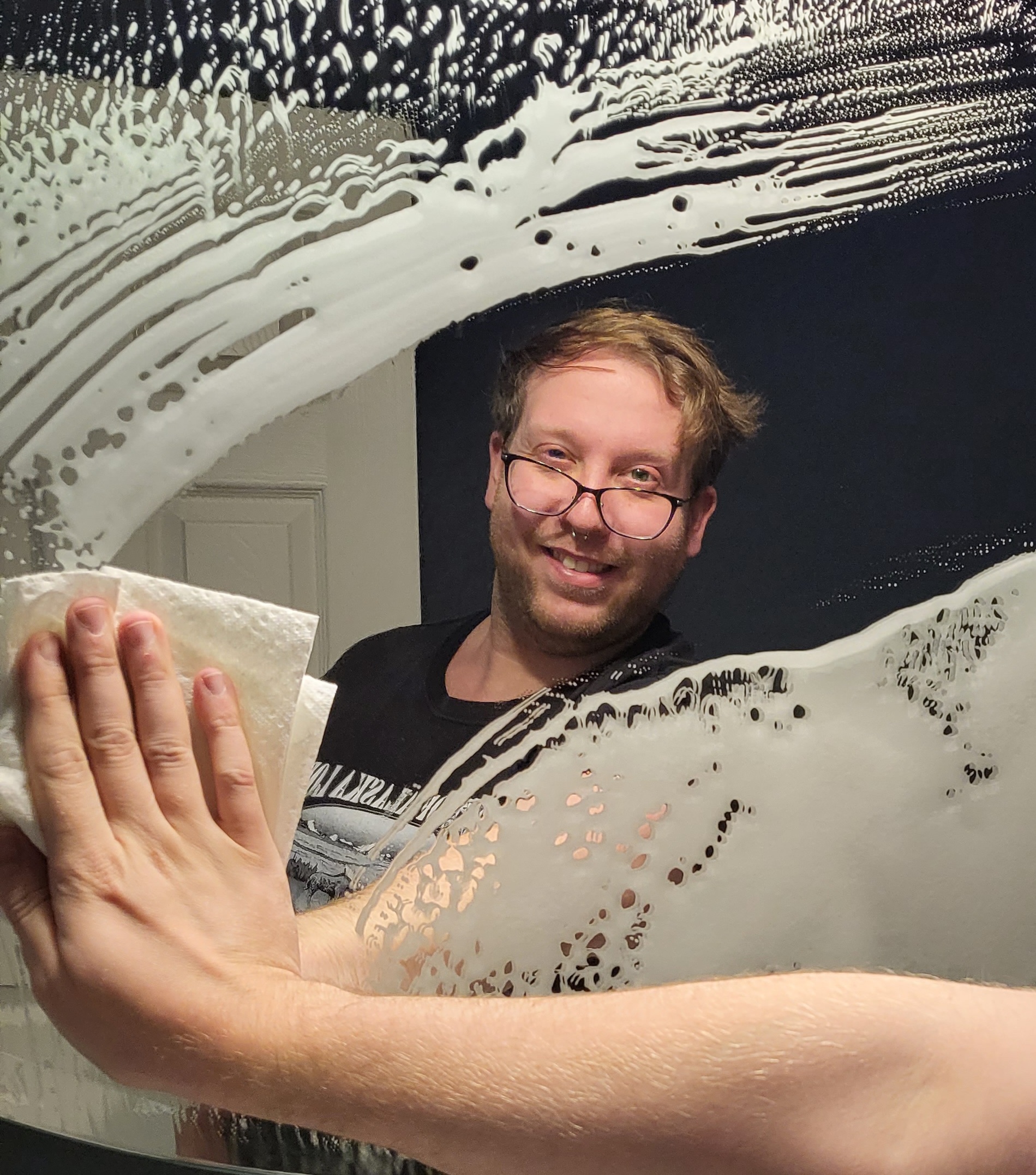The objective that I will be expanding upon through this project will be explaining how sensory cells translate stimulus into action potentials. I will be explaining this process as it relates to the eyes, and more specifically how the recent popularity of vision correction surgeries such as LASIK changes or regulates how these sensory cells perceive the world. My art piece utilizes photography to tell a story of the world becoming clear after a lifetime of diminished vision due to myopia.
Laser-assisted in situ keratomileusis, or LASIK surgery, is a process of sculpting the cornea through the use of a computer-controlled laser. In order to be selected for the procedure, the patient must exhibit the following through ophthalmologic testing and patient counseling at the provider’s office:
- Ample thickness of the cornea
- Stable myopia (that is to say, the patient’s eyesight is not progressively getting worse)
- Be free of any diseases of the eye—to include the outer eye, posterior segment or lids
- Is willing to commit to post-operative instructions and care plan
- Does not have any systemic or auto-immune diseases
- Has realistic expectations about the procedure
- Is informed about the possible complications and is willing to take the risks involved
- Is over 18 years old, but preferably over 21 years old
(Titiyal, Ahuja, & Sharma, 2005)
To review how the healthy and unencumbered eye processes stimuli, I will explain step by step how we perceive our surroundings using sight. First, the eye perceives light that is reflected off surrounding objects in varying degrees and this light passes through the cornea—or clear dome that shields the lens—and passes through the lens and is casted upon the retina along the rear of the eye in an upside-down image. The retina is lined with millions of light-sensing nerve cells that are referred to as rods and cones. Once at the retina, the light stimulus is interpreted by these rods and cones and travels as several impulses along the optic nerve to the occipital lobe in the brain where it is translated into an image that is now ‘right-side’ up.
When a person experiences myopia, or is commonly referred to as ‘near-sighted’ (a condition that is able to be corrected in LASIK procedures), it means that they are unable to focus on the light reflected from objects far away. This is because the focal point from the lens is not reaching the retina as it normally would in a healthy eye. In a near-sighted patient, the focal point falls short of the retina. Corrective concave lenses (glasses or contacts) widen the path of light through the eye which corrects the position of the focal point upon the retina. (AniMed, 2016)
The process involved in LASIK procedures is quite a fast one, but the steps involved are delicate and must be incredibly fine-tuned in order to reduce any chance of error. This is why the procedure has evolved to incorporate laser ablation with the precision of computers. The specific process involves creating a small flap in the outermost layer of the cornea. Once doctors have access to the cornea, they are able to utilize lasers to ‘sculpt’ the cornea to the correct shape that will align the focal point in its correct position on the retina. The procedure is concluded by replacing the flap that was previously made (which our amazing eye begins healing immediately). Astoundingly enough, the actual procedure itself takes approximately 30 seconds per eye—and now the eyes can properly sense the light stimuli and the optic nerve can transport those stimuli to be properly interpreted by the occipital lobe! (Reinstein MD, 2012)
Works Cited
AniMed. (2016, April 3). How the Eye Works Animation – How Do We See Video – Nearsighted & Farsighted Human Eye Anatomy. Retrieved from YouTube: https://www.youtube.com/watch?v=YcedXDN6a88
Reinstein MD, D. Z. (2012, February 29). The History of LASIK. Jounal of Refractive Surgery, pp. 1-4.
Titiyal, J. S., Ahuja, R., & Sharma, N. (2005). Indications and Contraindications of LASIK. In N. e. Sharma, Step by Step LASIK Surgery (pp. 7-13). Informa Healthcare.



Wow, I have heard of laser eye surgery before, but I’m not familiar with its more proper name. I also haven’t had this amount of detailed description that I find super informative and helpful, so it was cool to learn more about something that I’ve heard about but never really fully understood before. Your writing is both professional but at the same time, I feel easy enough for just about anyone to understand. I also liked how you included the list of qualifications needed to get this surgery, to show that not anyone can get it and that it needs to be okay for you to do so from a safety point of view.
Excellent job! that was fun to read/learn more about.